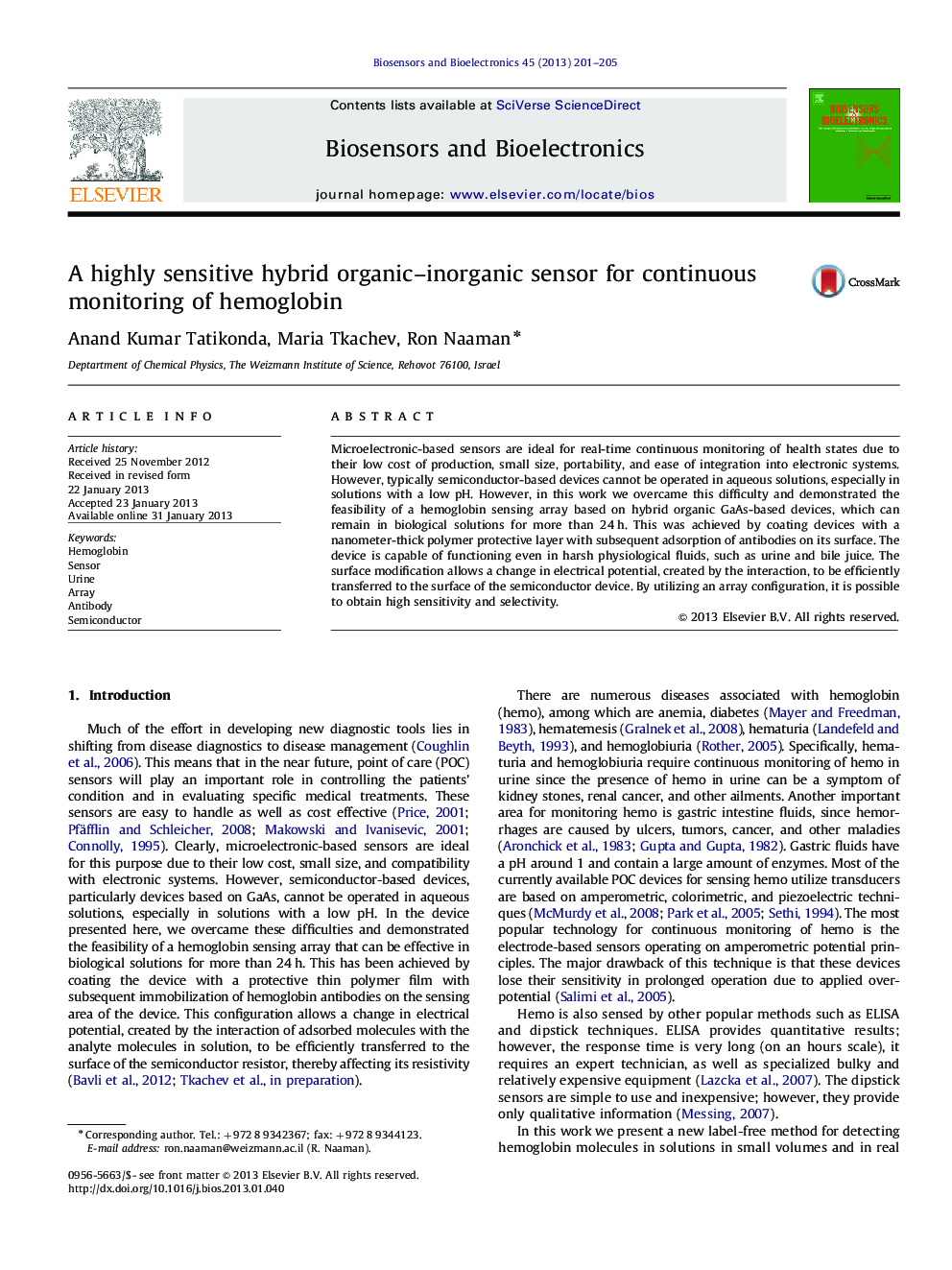| Article ID | Journal | Published Year | Pages | File Type |
|---|---|---|---|---|
| 867046 | Biosensors and Bioelectronics | 2013 | 5 Pages |
Microelectronic-based sensors are ideal for real-time continuous monitoring of health states due to their low cost of production, small size, portability, and ease of integration into electronic systems. However, typically semiconductor-based devices cannot be operated in aqueous solutions, especially in solutions with a low pH. However, in this work we overcame this difficulty and demonstrated the feasibility of a hemoglobin sensing array based on hybrid organic GaAs-based devices, which can remain in biological solutions for more than 24 h. This was achieved by coating devices with a nanometer-thick polymer protective layer with subsequent adsorption of antibodies on its surface. The device is capable of functioning even in harsh physiological fluids, such as urine and bile juice. The surface modification allows a change in electrical potential, created by the interaction, to be efficiently transferred to the surface of the semiconductor device. By utilizing an array configuration, it is possible to obtain high sensitivity and selectivity.
► A method for protecting a GaAs device from degradation while keeping its sensing capabilities. ► Attaching antibodies to the protecting layer, so that the antibodies are active and efficient. ► Blocking the polymer surface so as to avoid nonspecific interactions. ► Applying the array approach for the detection of hemoglobin.
